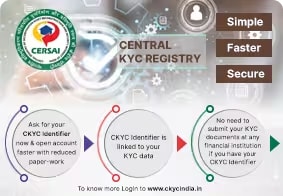Enjoy Zero Charges on All Commonly Used Savings Account Services
- About Us
- MD & CEO letter about the bank
- MD & CEO
- Our History
- Letter to Shareholders on the 1st Annual Report after Merger
- Letter to Shareholders on the 2nd Annual Report after Merger
- Letter to Shareholders on the 3rd Annual Report after Merger
- Letter to Shareholders on the 4th Annual Report after Merger
- Board of Directors
- Awards & Accolades
- News Room
- Investors
- Careers
- ESG
-
Login
Are you ready for an upgrade?
Login to the new experience with best features and services
- Accounts
-
Deposits
IDFC FIRST Bank Deposits
View all Deposits -
Loans
IDFC FIRST Bank Loans
View all Loans - Wealth & Insure
-
Payments
IDFC FIRST Bank Payments
View all Payments - Cards
- Rocket Current Account
-
Cash Management Services
IDFC FIRST Bank Cash Management Services
View all Cash Management Services - Supply Chain Finance
-
Corporate Lending
IDFC FIRST Bank Lending
View all -
Treasury
IDFC FIRST Bank Treasury
See more details - NBFC Financing
-
Login
Are you ready for an upgrade?
Login to the new experience with best features and services
-
Customer care hotlineCall 1800 10 888
- IDFC FIRST Bank Accounts
- Savings
Account - Corporate Salary
Account - Senior Citizens
Savings Account - First Power
Account - Current
Account - NRI Savings
Account - TASC Institutional
Account - Savings Account
Interest Calculator
- IDFC FIRST Bank Deposits
- Fixed
Deposit - Recurring
Deposit - NRI Fixed Deposit
- Safe Deposit Locker
- FD Calculator
- RD Calculator
- IDFC FIRST Bank Loans
- Personal Loan
- Consumer Durable
Loan - Home Loan
- Education Loan
- New Car Loan
- Pre-owned Car Loan
- Two Wheeler Loan
- Pre-owned Two
Wheeler Loan - Commercial Vehicle
Loan - Gold Loan
- Loan Against Property
- Easy Buy EMI card
- Personal Loan
EMI Calculator - Education Loan
EMI Calculator - Home Loan
EMI Calculator
- IDFC FIRST Bank Wealth & Insure
- FIRST Select
- FIRST Wealth
- FIRST Private
- Mutual Funds
- Sovereign Gold Bond
- Demat & Trading
Account - Term Insurance
- Life Insurance
- Health Insurance
- General Insurance
- IDFC FIRST Bank Payments
- FASTag
- Credit Card
Bill Payments - UPI
- Funds Transfer
- Retail Forex
- Pay Loan EMI
- IDFC FIRST Bank MSME Accounts
- Current Account
- Merchant Multiplier
Account - Startup Current
Account - Agri Multiplier
Account - TASC Institutional
Account - Dynamic Current
Account - Freedom World
Current Account - World business
Account
- IDFC FIRST Bank Business Loans
- Unsecured - Business Loan
- Unsecured - Professional Loan
- Secured - Loan Against Property
- Working Capital Loan
- Construction Equipment Loan
- IDFC FIRST Bank Business Solutions
- Payments
- Collections
- Tax Payments
- Doorstep Banking
- Point of Sale (POS)
- MD & CEO letter about the bank
- MD & CEO
- Our History
- Letter to Shareholders on the 1st Annual Report after Merger
- Letter to Shareholders on the 2nd Annual Report after Merger
- Letter to Shareholders on the 3rd Annual Report after Merger
- Letter to Shareholders on the 4th Annual Report after Merger
- Board of Directors
- Awards & Accolades
- News Room
-
As per amendment in the Income Tax Rules, PAN or Aadhaar are to be mandatorily quoted for cash deposit or withdrawal aggregating to Rupees twenty lakhs or more in a FY. Please update your PAN or Aadhaar. Kindly reach out to the Bank’s contact center on 1800 10 888 or visit the nearest IDFC FIRST Bank branch for further queries.
-
-
Tier-II cities offer affordable housing, lower cost of living, and a better quality of life than metros, prompting many people to consider a move
Tier-I cities, commonly called metropolitan cities or metros, have long been a magnet for settlers. Historically, people have flocked to metros in search of better job opportunities and more egalitarian societies. With the lockdown-fuelled growth in remote working, metros are suddenly witnessing a slow but steady exodus of people, who are now flocking to tier-II cities instead, owing to several reasons. Let's see what they are.
1. Lower cost of living
On average, the cost of living in tier-II cities tends to be lower than in metros. A big reason for this is the lower cost of real estate and labour, which drives down prices of other products and services. Tier-II cities are usually cheaper in terms of rent, healthcare, and education costs for children.
2. Affordable housing
One of the greatest draws of moving to a tier-II city from a metro is the lower cost of real estate. Land, buildings, apartments, and commercial spaces tend to be far more affordable in tier-II cities. As such, individuals and families looking to buy a home might find far more attractive and spacious options within their budget in tier-II cities. Buying a house in a tier-II city makes more sense from a home loan perspective, too: cheaper real estate means a smaller loan, reducing the borrower's interest and repayment burden. IDFC FIRST Bank's home loans start with interest rates as low as 6.9% per annum and tenures as long as 30 years. The application and approval process is entirely digitised.
3. Proximity to family
Many metro settlers still have a family, including parents, living in tier-II cities. With many physical workplaces being rendered unnecessary thanks to remote work options, people are tempted to move back to their hometown closer to families and parents.
READ MORE
IDFC FIRST Bank's home loans start with interest rates as low as 6.9% per annum and tenures as long as 30 years. The application and approval process is entirely digitised.
4. Better quality of life
Tier-II cities tend to be less congested, have lower air pollution, boast more open spaces, and offer more accessible access to the great outdoors than metros. For many people, these factors result in a better quality of life for themselves and their families. As housing options develop in tier-II cities, their value proposition becomes difficult to deny.
If there ever were a time to move away from a metro, it is now. The shackles of big city offices have been broken, and connectivity, public transport, and communications infrastructure in tier-II cities are fast catching up. If you are considering relocating to a tier-II city with homeownership in mind, check out IDFC FIRST Bank's home loans here. With great interest rates, flexible tenures, and a no-hassle digital application process, this could provide the fillip your life needs.
Disclaimer
The contents of this article/infographic/picture/video are meant solely for information purposes. The contents are generic in nature and for informational purposes only. It is not a substitute for specific advice in your own circumstances. The information is subject to updation, completion, revision, verification and amendment and the same may change materially. The information is not intended for distribution or use by any person in any jurisdiction where such distribution or use would be contrary to law or regulation or would subject IDFC FIRST Bank or its affiliates to any licensing or registration requirements. IDFC FIRST Bank shall not be responsible for any direct/indirect loss or liability incurred by the reader for taking any financial decisions based on the contents and information mentioned. Please consult your financial advisor before making any financial decision.
The features, benefits and offers mentioned in the article are applicable as on the day of publication of this blog and is subject to change without notice. The contents herein are also subject to other product specific terms and conditions and any third party terms and conditions, as applicable. Please refer our website www.idfcfirstbank.com for latest updates.


 What's special about us
What's special about us




















